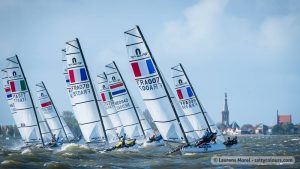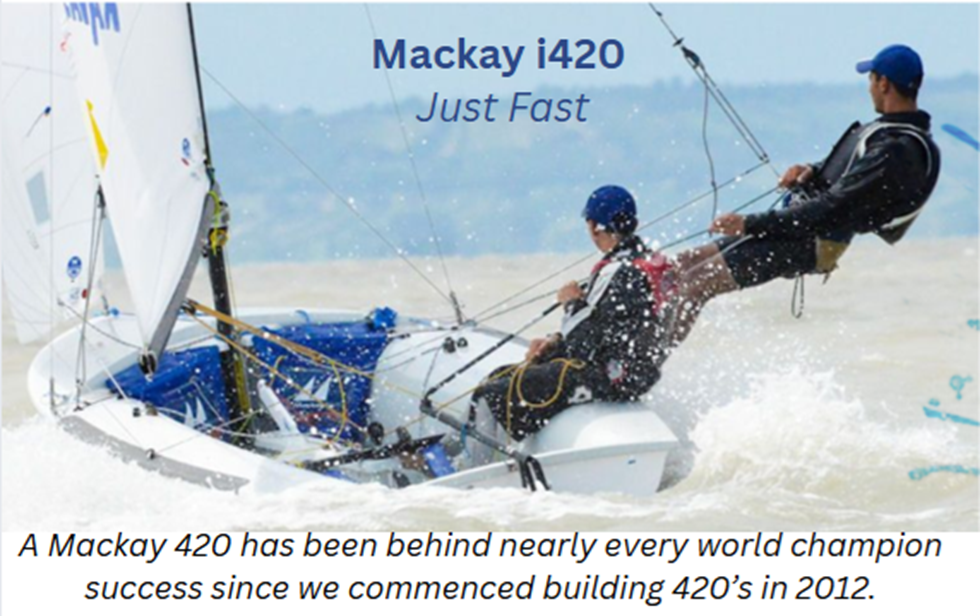
The Dockmaster is the ambassador of the St Francis YC docks; they are the primary person with whom a member or visiting yachtsman will interact with when arriving by vessel. The Dockmaster oversees the general maintenance of the docks and all floating assets. This individual possesses strong interpersonal skills, thrives in a team environment, and has a strong work ethic. To learn more about the Dockmaster position and to apply CLICK HERE
St. Francis Yacht Club was founded in 1927 by a group of 21 San Francisco Yachtsman with a vision of a club in the City. Ground was broken for the clubhouse that year, and events were held on members yachts until the club was formally opened in 1928. In 1959, the Club acquired its Tinsley Island Station, located on the Sacramento Delta. Tinsley offers members a warm boating destination to escape the traditional summer fog on the Bay. In 2002, the membership celebrated its 75th anniversary of activity on San Francisco Bay and around the world.
The yachting interests of our 2300-plus members include racing, cruising, sailboarding, kiteboarding, water-skiing and more. Our sailors have challenged and defended for the America’s Cup, brought home Olympic medals, and won prestigious races such as the Whitbread, Transpac and Pacific Cup. Whether cruising in the Mexican Sea of Cortez or racing in the Olympics, a St. Francis Yacht Club burgee is apt to be seen.
St. Francis Yacht Club is a year-round host of over 40 regattas on San Francisco Bay, including the annual Big Boat Series each September. The Club was host to the 2000 US Olympic Sailing Trials, and continues to host World and National Championships. StFYC is also dedicated to the development of young corinthian sailors. Our junior sailing team (ages 10 to 23) races locally and internationally in Optimists, Lasers, Radial Lasers, 29ers, 420’s and Flying Juniors. Each year, our Club hosts the Laser Sailing Symposium, with invitations to the world’s most competitive Laser sailors.

Blog
Club Profile: Christmas Cove Improvement Association

The beginnings of the Christmas Cove Improvement Association reach back more than a decade before its formal organization in 1900. The first summer visitors, mainly from the Boston area, began coming to Rutherfords Island and Christmas Cove in the early 1880’s, attracted then as now by the beauty of the surroundings and the fresh, cool ocean air.
“Since its founding in 1900, the Christmas Cove Improvement Association has served as a constructive and unifying force among the residents of the area. Basically family-oriented, it has, in a quiet and simple manner, brought a sense of cohesiveness and community to old and young alike. Intended to be neither a country club nor a yacht club, the Association is unique in its character. While respecting the individual’s desire for privacy, it has nonetheless been an important influence on the quality of life enjoyed by several generations. During its history, it has flexibly adapted itself to major changes in the external world. At the same time, it has successfully pursued its primary mission of uniting area residents in a common bond of mutual respect and interest.”


News Flash: CCIA is hiring a Waterfront/Program Director!
After the quiet period brought on by the Depression and World War II, another spurt of CCIA growth began. The first Christmas Cove Improvement Association float appeared in 1946, the first sailing races were in 1948, the Junior Program began with tennis and swimming in 1950 and added sailing two years later. Volunteer parents and older children were the initial instructors. As the Program rapidly grew much larger, salaried instructors were hired. Other milestones to appear were the Christmas Cove burgee in 1962 and the first fiberglass CC 21 sailboats in the 70’s. All along, the management, maintenance and growth of the Christmas Cove Improvement Association occupied the time of many volunteers every summer and also in the off-season. It still does.

Club Profile: Grand Bahama Sailing Center
News Flash: Grand Bahama Sailing Center seeks a full-time Director/Head Coach!
In 2006 a small group of local business people and keen sailors approached Sir Jack Hayward with the idea of resurrecting the Sir Charles Hayward Yacht Club. The two story building located at the end of the canal approximately half a mile West off the Grand Lucayan Waterway was built by Sir Jack in 1976 and named after his late Father. Built in traditional Bahamian style, the structure has French doors leading from the main room out to a balcony overlooking the water. An extensive patio leads to a swimming pool on the same level. The ground floor comprises of wash rooms and an apartment. Adjacent to the club building are two hard tennis courts. The Club was active in the 1970’s/early 1980’s and the small number of boats were privately owned by its members. The social scene was well supported and there were a number of lively regattas.
In the late 80’s many of the expatriate members left the island and support of the club diminished. It ceased operating as a club, closed its doors but some time later reopened as a restaurant called ‘Scorpios on the Bay’. They ultimately closed their doors and the property was dormant for several years. In 2001 the building was taken over by the Grand Bahama Development Company and operated as a sales office. This too was an unsuccessful enterprise and it closed three years later. When Joe Thompson, Chris Paine and Sarah Rolle approached Sir Jack in 2006 with the idea of starting a children’s sailing Club, he embraced the idea with great enthusiasm. A lease was granted by the Grand Bahama Development Company and the Grand Bahama Sailing Club Ltd was incorporated on 12th June 2008.
The club building, although structurally sound, needed some repairs and a face lift. A group of volunteers set about the design and construction of a sail storage facility and shed to house the boats. Fourteen Optimist dinghies were initially purchased by private owners with the condition that they all were put into the ‘Club Pool‘ for use by all members. Sir Jack provided substantial personal funds to make the improvements to the infrastructure and facilities which include the resurfacing of the tennis courts. In 2012 the Club took over the management of the Club docks whereby slips are rented to boat owners generating additional revenues. The Club remains a nonprofit organization relying on memberships, funds raisers, social events, and donations for support.
News Flash: Grand Bahama Sailing Center seeks a full-time Director/Head Coach!
Though a mainly volunteer driven organization, the Club has prospered with both social, sailing and tennis activities. In 2010 sixteen children participated in the annual Optimist National Championships in Nassau and have represented the GBSC every year since. In 2007 the Club held its first Summer Sailing Camp. Attracting both experienced sailors and beginners, the two week camps were well received, 
Today the Club fleet comprises of 21 Optimists, 9 Lasers, 6 Flying Juniors, a CAL 25 and three coach boats.
#4 Charleston wins Navy Women’s; #1 Charleston wins the coed Charleston Spring; #12 Boston College wins the John Jackson
Written by Chris Klevan

March 12, 2018– #4 College of Charleston won the Navy Spring Women’s regatta. Sailed at the venue of some of the premier regattas on the College Sailing circuit, this was the first inter conference hosted by the United States Naval Academy. Conditions were uncharacteristic of the Severn River and the top women in the nation had to be on their toes throughout the weekend.
Charleston did just that in both divisions, finishing second in A-Division in a tight race and the Cougars B-Division boat dominated once again. Junior, Paris Henken has been on fire thus far this season, posting wins at two of the top women’s events to start the year. Coupled with Liza Toppa ‘20, Henken won the division by 28 points, with 77 points after 16 races, including 4 firsts. An event where the scores were all over the place, no one could put together top-5 finishes like the Cougars B-Division boat.
Meanwhile, the other Charleston boat held their own to say the least. Alie Toppa and Annabel Carrington found their groove midway through Sunday when the Northwesterly breeze swung around to to East and became even more unpredictable. Toppa and Carringan totalled 12 points in Easterly, the final 6 races of the event. That hot streak got them within 2 points of the division win.
#3 Coast Guard’s A-Division stalwart, Dana Rohde and Maddie Ekin won A-Division with 77 points through 16 races. After an untouchable first 11 races where Rohde and Ekin only scored one race outside the top-5, the tandem faltered in the final 5 races, opening the door for Toppa and Carrigan.
If this type of racing is a forecaster for women’s sailing throughout the season, we’re in for some exciting stuff. It will be interesting to see what happens when #2 Boston College and #1 Yale join Charleston and Coast Guard in the fold.
Charleston won the Navy Fall Women’s with 156 points, Coast Guard finished second with 213 and the University of Rhode Island Rams finished 3rd with 237.

#1 College of Charleston’s coed squad won the Charleston Spring decisively. The interconference regatta, held at Charleston, on the Cooper River, was mainly populated by SAISA schools and was well represented by the conference. The first non SAISA finisher was St. Mary’s, who finished 5th.
In the twenty total races that were sailed, the Cougars combined for only 2 races outside the top-5 and compiled an impressive 7 bullets. Patrick Shannon ‘20 and Gerald Williams ‘19 shared helmsman duties throughout the A-Division win while Laure Masterson ‘20 assumed the crew role throughout, regardless of who was holding the tiller. The three Cougars averaged a 2.6 score, totalling 26 points through 10 races. They won A-Division handily, 23 points ahead of second place. To add to the Cougars performance in A-Division, Lawson Willard ‘19 and McCloy Dickson ‘19 won B-Division by 13 points.
Charleston finished with 59 points, University of South Florida finished second with 95 points and Jacksonville finished 3rd overall with 98 points.
The John Jackson Team Race at Georgetown was taken by #12 Boston College in a tight battle with the home team, the #4 ranked Georgetown Hoyas. Having to take care of business in the final four to secure the win, the Eagles beat both the Midshipmen of Navy and the Monarchs of ODU with the play-2. A play that requires discipline and a deep understanding of the game, the Eagles, led by Scott Sinks, showed they have the stuff to, not only, make it out of NEISA but also compete on the highest level. The last race of the final-four was won by Georgetown, however, Boston College had already wrapped up the event.
“The win was a nice confidence boost for the team coming the weekend after spring break,” said coach Greg Wilkinson. “It showed the guys that the work put in over break has showed some dividends.”
The Eagles finished with a 13-4 record, Georgetown finished second with a 12-5 win, loss record and #13 Navy finished 3rd, two losses off the lead.
Unlike Boston College, both Navy and Georgetown experimented with lineups, sailing 5 skippers each and Georgetown showcased 6 different crews throughout the event. Such experimentation is not uncommon in these early season team races. Team racing is truly a full team effort. The school that has the most depth typically will come through come championship season in May.
One Design Class Profile: Nacra 15

The History
The production of the Nacra 15 began in 2015 and was designed from scratch to the ISAF criteria so it could become the official ISAF youth catamaran. The purpose was to replace the older catamarans and create a new catamaran that had a more modern design along with the ability to hold more crew weight. The Nacra 15 is a mini version of 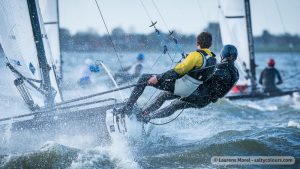
The Boat
The Nacra 15 is a semi-foiling catamaran which carries two curved daggerboards that provide lift. Less drag and more lift makes this boat faster and more exciting! The boat is 15.4 feet long and includes a mainsail, jib, and spinnaker. This official World Sailing youth multihull is exciting and fast but is safe for youth sailors. This boat is an excellent way for youth sailors to learn to work as a team. The Nacra 15 is one of the trainer boats in the Youth Olympic Development Program and serves as one of the pathways for youth sailors on a journey to the Olympics.
For More Information on the Nacra 15:
http://www.nacra15class.com
http://www.nacrasailing.com/project/nacra-15-pathway-for-youth-sailing/
Stevenson School Seeks Head Sailing Coach
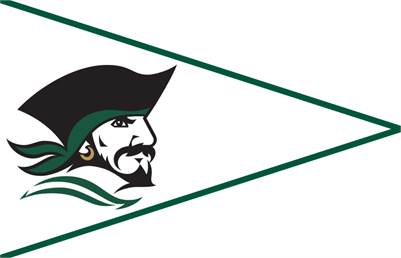
Stevenson is a day and boarding community in which students learn to read, write, observe, calculate, research, analyze, innovate, speak, listen, imagine, laugh, collaborate, and dare and, in the process, prepare for the challenges they will encounter in college and the world. This is also a community in which adults, inspired by a sense of shared purpose, work consciously together to model, as often as possible, a collective engagement with life that we wish our students to emulate.
Given our respect for the historic significance of athletics at Stevenson, our commitment to students’ health and well-being, and our belief that sport is a prime site for experiential learning and for establishing lasting values and lifelong relationships, we will provide our students with a structured and top-quality athletic education, through which they learn integrity and responsibility; become stronger and healthier; become more resilient and team-oriented; and develop character, humility, and grit. We will maintain an athletics program as competitive as it is principled, and develop integrated, forward-thinking, value-based solutions to the challenges we face in balancing athletics’ traditional role with new co-curricular opportunities and emerging institutional priorities. We will take athletics coaching seriously as an area for professional development, and dedicate the resources needed to enhance our coaches’ skill, creativity, and expertise.
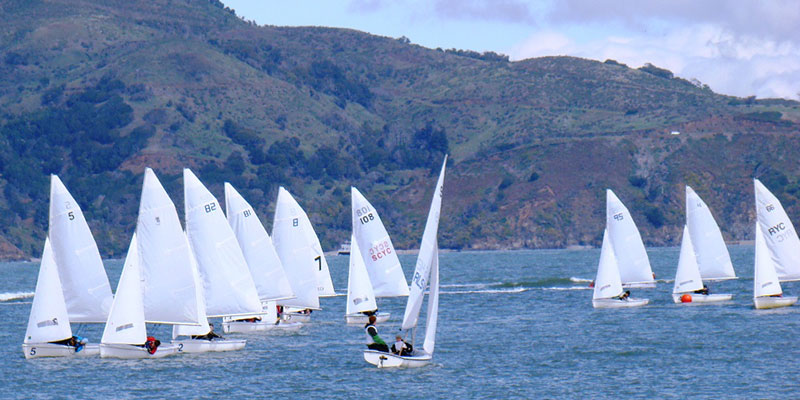
News Flash: Stevenson School is Hiring a Head Sailing Coach!



